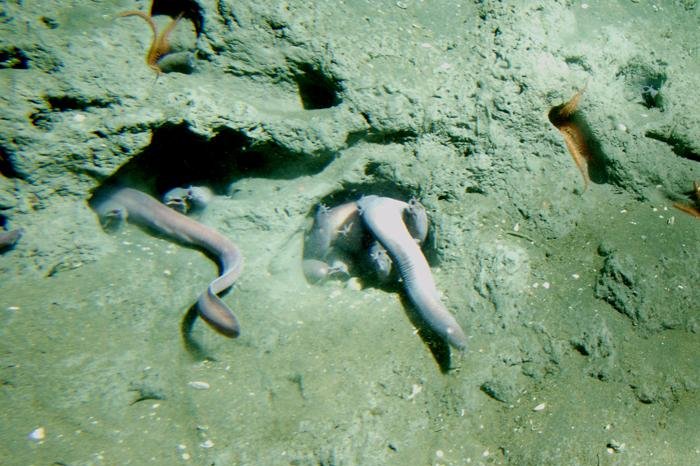Hagfish, a group of jawless fish, haven't evolved much in 300 million years. Photo by NOAA
Dec. 6 (UPI) -- The hagfish, an eel-shaped, jawless fish, has offered scientists new insights into the development of the inner ear structure present in all jawed vertebrates.
The inner ears of all jawed vertebrates feature three semicircular canals. Analysis of Paleozoic era fossils suggest a group of jawless fish featured two semicircular canals.
To better understand the development of the third canal, scientists looked to hagfish and lampreys, two of the closest jawless relatives of jawed vertebrates. Both hagfish and lampreys are still living, and research suggests they haven't evolved all that much over the last 300 million years.
While lampreys have two semicircular canals, hagfish have only one. When researchers analyzed the genomes of lampreys, hagfish and jawed vertebrates, they found all three groups use the same basic pattern of gene expression and inner ear development.
The analysis showed the same regulatory genes, Tbx1 and Patched, were expressed at similar locations and similar times across all three groups.
Researchers shared the results of their new analysis this week in the journal Nature.
"This is the first time, to our knowledge, that the development of the hagfish inner ear is reported," the study's authors wrote.
Scientists previously assumed hagfish were more primitive in their development, but the latest research proved their single canal is an evolved trait, not a more primitive design characteristic.
Surprisingly, scientists found lampreys and hagfish both expressed Otx1, the gene responsible for the formation of the third canal found in all jawed vertebrates, which suggest the trait is an ancient feature.
"A more complete understanding will be possible by performing studies with an animal that represents the lineages before jawed and jawless vertebrates diverged," researchers wrote in a news release.















